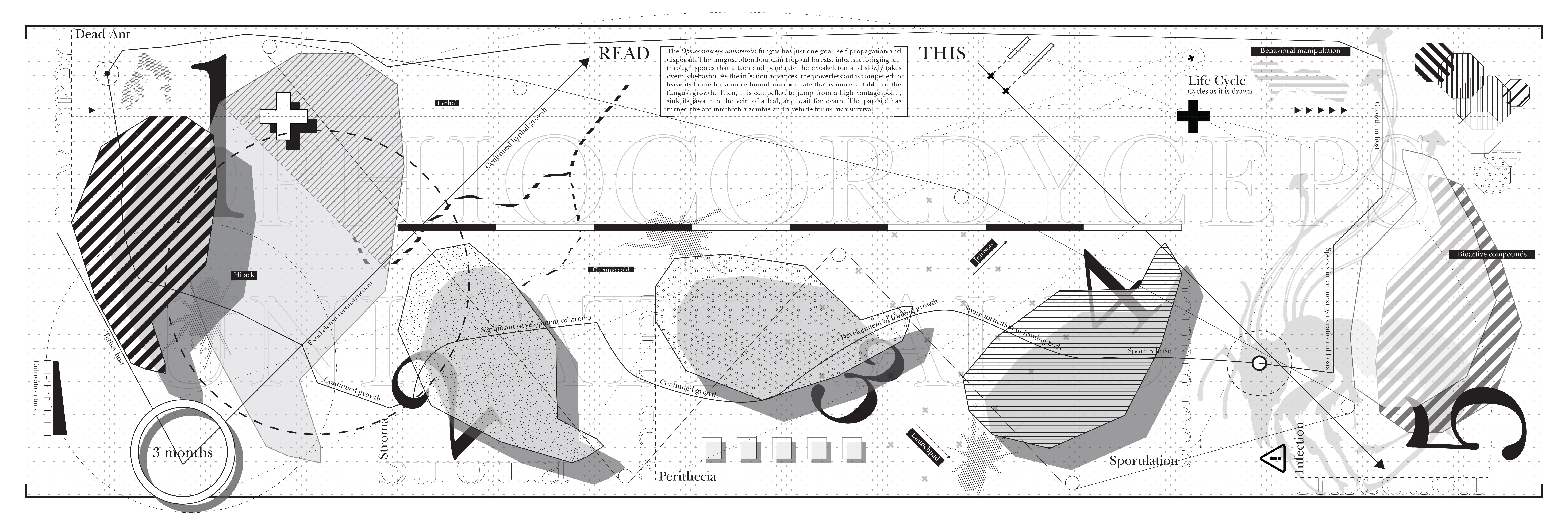Parasite Paradise
Symbiotic relationships between process and product

Infection Cyle from Marco Nieto on Vimeo.
Team: Marco Nieto and Abby StockSpecial thanks to our advisor Perry Kulper.
In effort to explore ways we work, ideas of authorship, methodologies, and second glances at representation, this project follows a digital “Exquisite Corpse” model in which the work is passed back and forth, creating an indexical recording of the hands that have touched it and the fingerprints left over. Fascinated by ideas of parasites and Paris sites, we have independently and codependently dived into these topics to explore what certain overlaps and potentials they offer in the face of contemporary issues of mass media consumption.
The first approach has been that of the parasite. Various projects and texts, ranging from Diller Scofidio + Renfro’s Para-site installation to Michel Serres’ “Parasite” novel, have created an idiosyncratic laboratory of speculation that leverages taxonomy, etymology, alliteration, behavior, analogous relationships, and other pieces of evidence in effort to explore and investigate the lessons we can learn from the bodies and forces around us.
Above:
A drawing that documents the stages and timeline of Cordyceps, a parasitic fungus that hijacks an insect’s behavior and manipulates the host to commit self-sacrifice in order to disperse the fungus’ spores.

Mapping the way in which various parts of the word “parasite” can offer possibilities when combined with Michel Serres’ defintions.



These cryp-tych/triptych drawings represent the three different classifications of parasites as defined by Michel Serres.
1) The biological parasite, “...changes hostility into hospitality, exchanges outside for inside.”
2) The social parasite, for example, “...is a guest who exchanges his talk, praise, and flattery for food from his host. He obtains energy and pays for it in information.”
3) The static parasite, “...is the noise in a system or the interference in a channel.”




The second approach focuses on constructing, deconstructing, and reconstructing Le Corbusier’s “Walls Against Paris” and its staged elements alongside other notable villas.